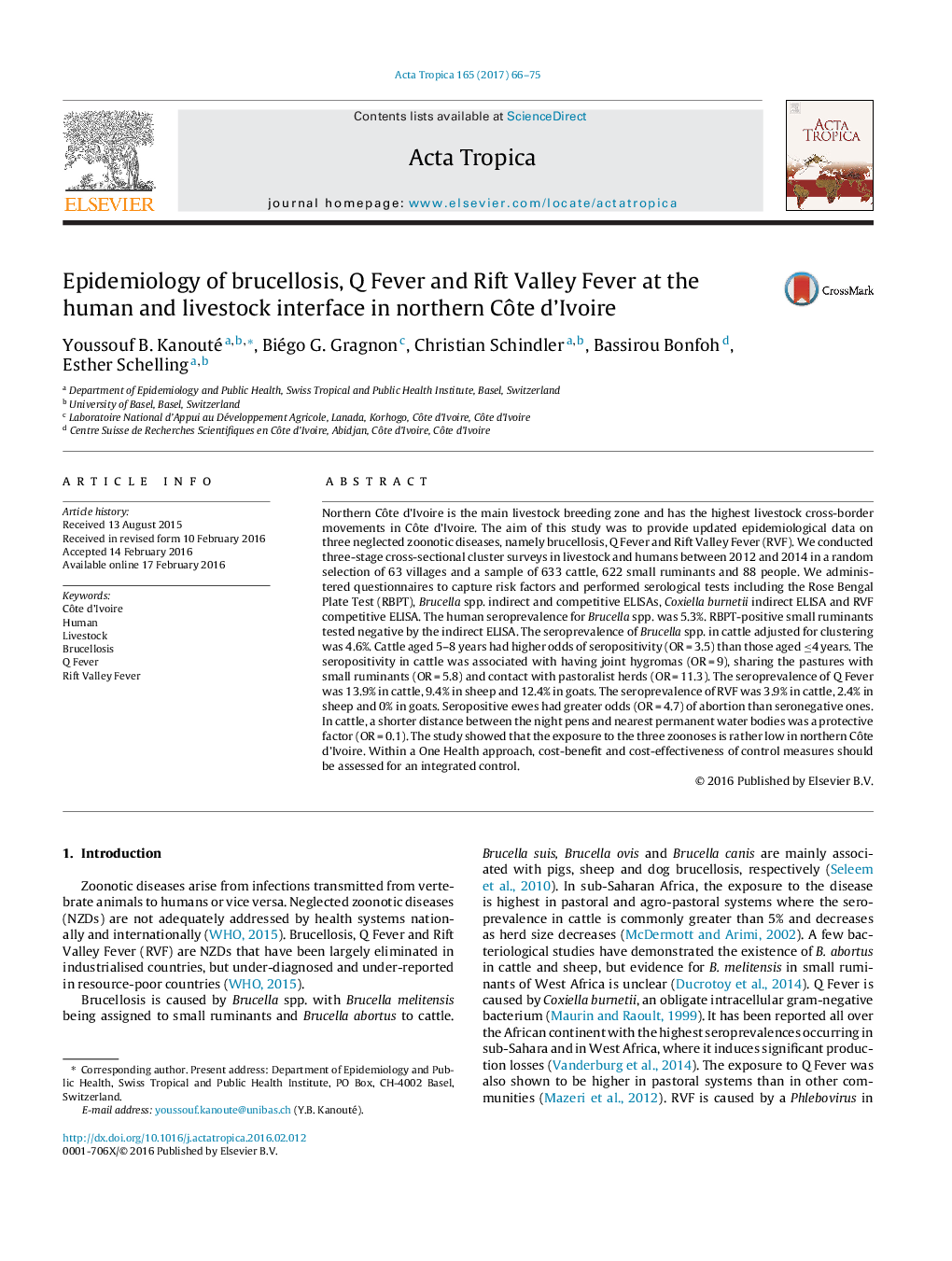| کد مقاله | کد نشریه | سال انتشار | مقاله انگلیسی | نسخه تمام متن |
|---|---|---|---|---|
| 5670822 | 1592759 | 2017 | 10 صفحه PDF | دانلود رایگان |

- Studies on brucellosis, Q Fever and Rift Valley Fever were needed in Côte d'Ivoire.
- No control plan for neglected zoonoses exists in Northern part of the country.
- Contact with pastoralist herds was related to exposure to brucellosis and Q Fever.
- Intermixing of livestock species exposed to Rift Valley Fever and brucellosis.
- Cost-benefit of zoonoses control has to be assessed in the West African region.
Northern Côte d'Ivoire is the main livestock breeding zone and has the highest livestock cross-border movements in Côte d'Ivoire. The aim of this study was to provide updated epidemiological data on three neglected zoonotic diseases, namely brucellosis, Q Fever and Rift Valley Fever (RVF). We conducted three-stage cross-sectional cluster surveys in livestock and humans between 2012 and 2014 in a random selection of 63 villages and a sample of 633 cattle, 622 small ruminants and 88 people. We administered questionnaires to capture risk factors and performed serological tests including the Rose Bengal Plate Test (RBPT), Brucella spp. indirect and competitive ELISAs, Coxiella burnetii indirect ELISA and RVF competitive ELISA. The human seroprevalence for Brucella spp. was 5.3%. RBPT-positive small ruminants tested negative by the indirect ELISA. The seroprevalence of Brucella spp. in cattle adjusted for clustering was 4.6%. Cattle aged 5-8 years had higher odds of seropositivity (OR = 3.5) than those aged â¤4 years. The seropositivity in cattle was associated with having joint hygromas (OR = 9), sharing the pastures with small ruminants (OR = 5.8) and contact with pastoralist herds (OR = 11.3). The seroprevalence of Q Fever was 13.9% in cattle, 9.4% in sheep and 12.4% in goats. The seroprevalence of RVF was 3.9% in cattle, 2.4% in sheep and 0% in goats. Seropositive ewes had greater odds (OR = 4.7) of abortion than seronegative ones. In cattle, a shorter distance between the night pens and nearest permanent water bodies was a protective factor (OR = 0.1). The study showed that the exposure to the three zoonoses is rather low in northern Côte d'Ivoire. Within a One Health approach, cost-benefit and cost-effectiveness of control measures should be assessed for an integrated control.
123
Journal: Acta Tropica - Volume 165, January 2017, Pages 66-75